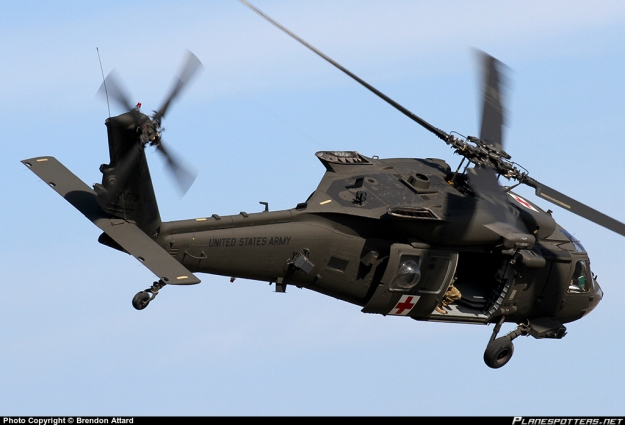Achieving Quality: Key Approaches for UH 60 Helicopter Maintenance
Achieving Quality: Key Approaches for UH 60 Helicopter Maintenance
Blog Article
Comprehending the Mechanics and Engineering Behind Uh 60 Helicopters
The UH-60 helicopter, commonly known as the Black Hawk, stands as a pinnacle of contemporary rotorcraft modern technology, personifying a blend of robust engineering and elaborate auto mechanics. As we peel back the layers of the UH-60's style, a globe of detailed systems and careful design comes to light.
Background of UH-60 Helicopters
The background of UH-60 helicopters traces back to the late 1970s when the United States Army sought a versatile and innovative energy helicopter to replace its aging fleet. In response to this requirement, the Sikorsky Airplane Firm created the UH-60 Black Hawk helicopter. Introduced in 1979, the UH-60 rapidly came to be a staple in armed forces procedures as a result of its outstanding capacities.
The UH-60 was created to succeed in a variety of missions, consisting of troop transport, medical discharge, digital war, and special operations. Its capacity to adapt to different functions made it a beneficial property to the U.S. uh 60. Military and various other military pressures around the world
For many years, the UH-60 platform has undertaken several upgrades and variants to enhance its performance and equal developing goal needs. These helicopters have actually seen extensive service in disputes such as the Gulf Battle, Afghanistan, and Iraq, showcasing their integrity and convenience in varied operational environments. The UH-60's abundant background is a testament to its long-lasting legacy as a leading utility helicopter.

Engine and Power Solutions
Making use of innovative propulsion technology, UH-60 helicopters are geared up with innovative engine and power systems to ensure optimal performance and reliability in a variety of operational circumstances. The UH-60, frequently understood as the Black Hawk, is powered by two General Electric T700-GE-701D engines, each with the ability of supplying up to 1,940 shaft horsepower. These turboshaft engines provide the necessary drive for the helicopter to accomplish its objectives effectively, consisting of troop transportation, medical evacuation, and battle assistance.

Rotor System and Aerodynamics
Exactly how do the rotor system and the rules of aerodynamics of UH-60 helicopters add to their functional efficiency and trip capacities? The rotor system of the UH-60 helicopter plays an essential function in supplying lift and propulsion. The UH-60 features a four-bladed, completely verbalized blades system that permits high maneuverability and security throughout flight. This style enables the helicopter to execute a wide variety of goals, from transport and clinical evacuation to battle procedures.
Aerodynamics go now also play a crucial duty in the performance of UH-60 helicopters. The streamlined fuselage and blades blade layout lower drag, allowing the helicopter to accomplish greater rates and much better gas efficiency. The wind resistant style of the UH-60 additionally adds to its ability to operate in diverse ecological problems, including warm temperatures and high altitudes.
Avionics and Trip Control Equipment

In its complex coordination with the blades system and the rules of aerodynamics of UH-60 helicopters, the avionics and trip control systems create a crucial network of modern technologies shaping the airplane's functional capacities. In the UH-60, these systems include electronic displays, communication radios, General practitioner navigation, weather radar, and auto-pilot systems.
The trip control systems of the UH-60 are in charge of translating the pilot's inputs into the proper changes go to my blog to the rotor system, making certain stable flight and ability to move. These systems contain hydraulic actuators, servos, and computers that work together to control the major and tail blades, as well as various other flight control surfaces. By exactly taking care of the helicopter's trip characteristics, these systems enable pilots to do a wide variety of missions, from transport and search-and-rescue to battle operations, with precision and self-confidence.
Function and Applications in Air Travel
Avionics systems in UH-60 helicopters incorporate a variety of electronic systems that aid in navigating, interaction, monitoring, and managing different airplane functions. These systems consist of digital display screens, auto-pilot systems, interaction radios, GPS navigation equipment, and climate radar. In addition, these systems include safety attributes such as autopilot modes, terrain awareness warning systems, and security augmentation systems to improve the total safety and security and operational capacities of the UH-60 helicopters in numerous objectives, consisting of troop transport, medical evacuation, search and rescue, and aerial firefighting.
Final Thought
To conclude, the UH-60 helicopter is a functional airplane with a rich history and advanced design. Its engine and power systems, rotor system, the rules of aerodynamics, avionics, and flight control systems all function with each other to make it a efficient and trusted maker. The UH-60's function and applications in aviation are substantial, ranging from army procedures to search and rescue missions. Its continued advancement and usage show its relevance in the area of aviation (uh 60).
In its complex coordination with the blades system and the rules of aerodynamics of UH-60 helicopters, the avionics and trip control systems develop a vital network of modern technologies shaping check my blog the airplane's operational capacities.The trip control systems of the UH-60 are responsible for converting the pilot's inputs into the suitable changes to the rotor system, ensuring steady flight and ability to move. Avionics systems in UH-60 helicopters encompass an array of electronic systems that help in navigation, communication, tracking, and managing various airplane functions. In addition, these systems include safety and security attributes such as autopilot modes, terrain recognition alerting systems, and stability enhancement systems to boost the total security and functional capacities of the UH-60 helicopters in numerous missions, consisting of troop transportation, clinical evacuation, search and rescue, and aerial firefighting.
Its engine and power systems, blades system, aerodynamics, avionics, and flight control systems all work together to make it a trusted and effective device.
Report this page